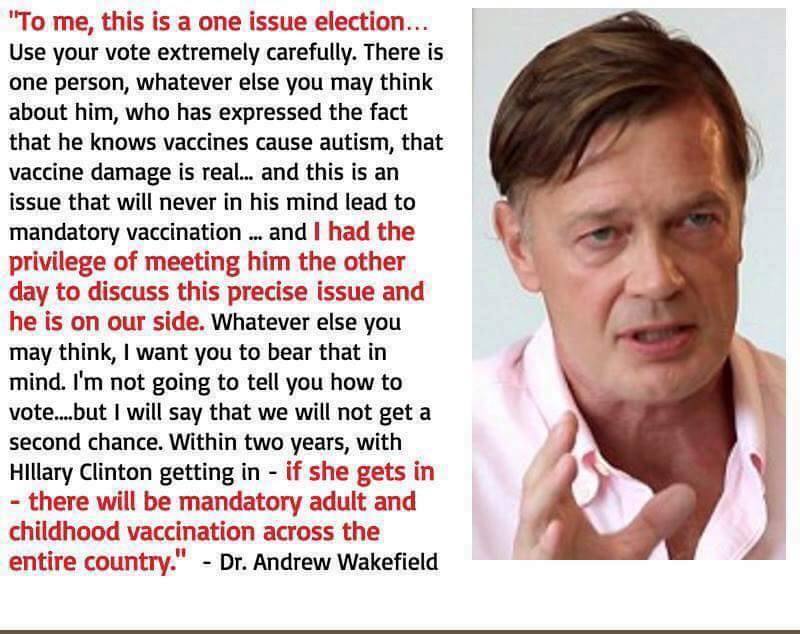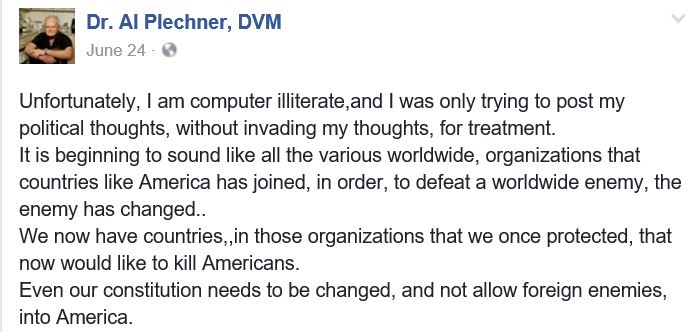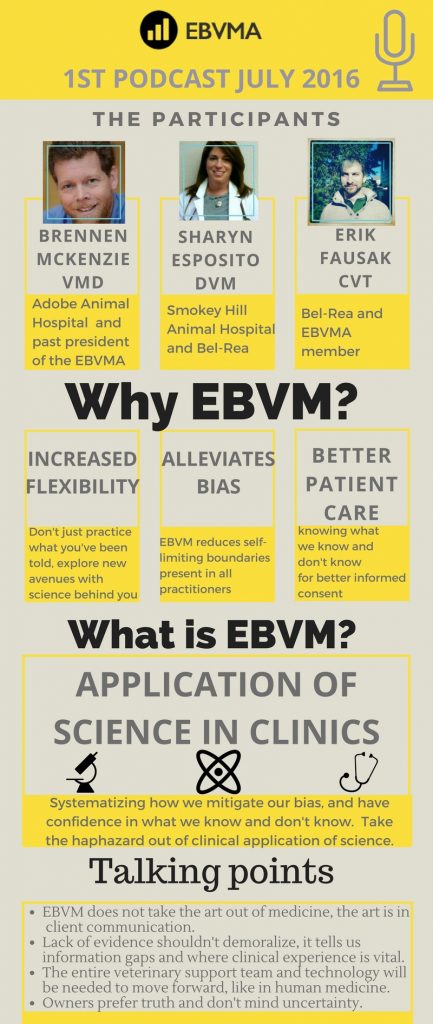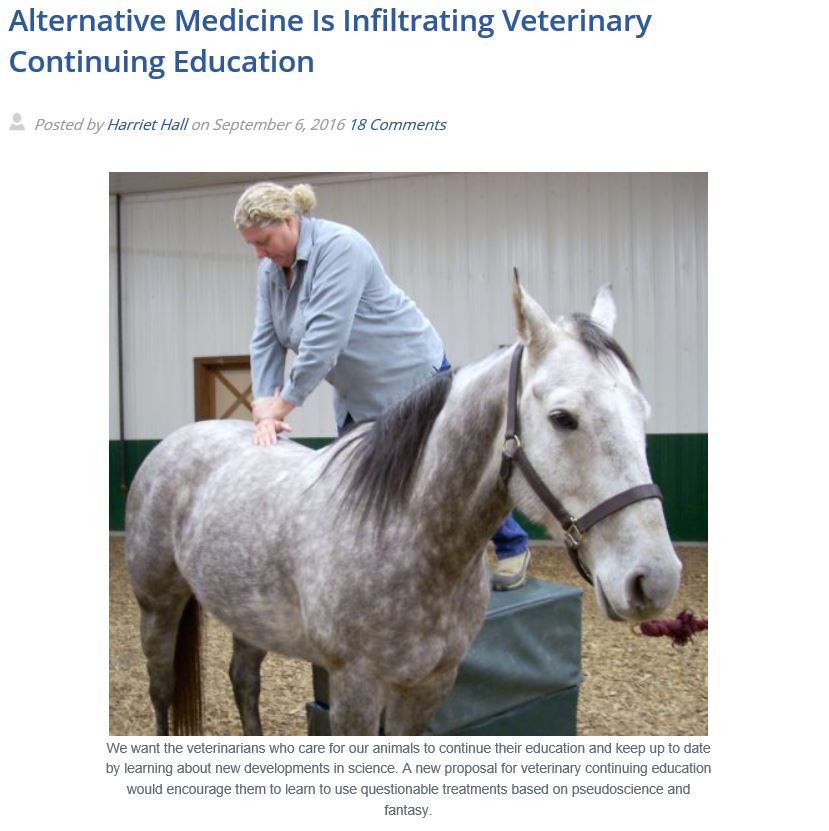Having written extensively about acupuncture and the research associated with it during my acupuncture training, I haven’t been inclined to revisit the topic for a while. However, I ran across a recent study which I though illustrated the issues and ambiguities in acupuncture research nicely, so I thought it worth covering.
Scallan EM, Simon BT. The effects of acupuncture point Pericardium 6 on hydromorphone-induced nausea and vomiting in healthy dogs. Vet Anaesth Analg. 2016 Sep;43(5):495-501.
The Study
The purpose of the study was to investigate whether acupuncture could reduce the nausea and vomiting commonly seen with the use of narcotic pain medications before surgery in dogs. The study had some nice design features, including effective randomization and a reasonable sample size. However, there were also some issues with the study that are common to acupuncture research and make the results more difficult to interpret.
Eighty-one healthy dogs presented for neutering at a veterinary college hospital were randomly assigned to received acupuncture (dry needle stimulation) at PC 6 (a point near the wrist thought to reduce nausea and vomiting), LU 5 (a point near the elbow chosen as a sham point because it is associated with a different nerve and has no history of use for nausea and vomiting), and a group that received no treatment. The dogs were observed for vomiting and signs of nausea (drooling and licking their muzzles).
Results
In terms of vomiting, the apparent effect of acupuncture depended on how the vomiting was assessed. More dogs vomited in the sham (81.4%) and no treatment groups (74%) than in the acupuncture treatment group (37%). However, in terms of the number of vomiting episodes, the sham group appeared to have more than the acupuncture group, but there were no differences between acupuncture and control or sham and control. (The paper is a bit hard to interpret on this point. The authors state, “The median (range) number of vomiting episodes in dogs that vomited were 0 (0–2) in [acupuncture],1(0–6) in [sham acupuncture], and 1 (0–3) in [control].” However, it makes no sense that there could be zero vomiting episodes in dogs that vomited. In any case, there were few vomiting episodes for most dogs, so chance likely would have a strong influence on the differences between the number of episodes in each group.)
In terms of signs of nausea, there were no differences between groups in the amount of muzzle licking that occurred, and between 92-100% of dogs licked their muzzles some. There were also no statistically significant differences in drooling between groups, though in terms of raw numbers the incidence of drooling was nearly the same in the acupuncture group (18.5%) and the sham group (22.2%) and much higher in the control group (44.4%).
So in terms of overall results, it looked like the acupuncture reduced the number of dogs that vomited, though not the number of vomiting episodes in the dogs who did, and didn’t have a significant effect on signs of nausea.
Issues with this Study
One major challenge for acupuncture studies is the effective use of blinding to reduce bias. Patients and researchers who are aware of which treatment a patient is getting in a study commonly report and interpret symptoms differently than observers who don’t have this information, and usually this difference makes the treatment look better than it actually is. While dogs don’t have beliefs or expectations that affect their response to treatments, their owners and researchers in veterinary studies certainly do, and this caregiver placebo effect is well-known to introduce bias into research studies.
The trouble with acupuncture is that it is very hard to fool patients regarding whether or not they are being stuck with a needle, and it is impossible to fool the acupuncturists. Fake needles can help, though they are imperfect, and when they are used often they seem to work just as well as real needles. Sham points, that is needling places not thought to be relevant to the symptoms being studied, is also problematic because sticking a needle anywhere in the body is going to have some effects. Acupuncturists often reject negative studies that find no difference between sham points and the supposedly real point because they argue that rather than proving acupuncture is a placebo, these studies actually prove the sham points work as well as the real ones. This, of course, raises the awkward question of why acupuncture should be seen as a rational, specific system for treating illness requiring specialized training and expertise to employ if it makes no difference where you put the needles.
In this study, the observers could clearly see whether or not the dogs had needles in their legs. Supposedly, the observers knew nothing about acupuncture, so they presumably couldn’t tell the sham treatment from the real treatment, but they could certainly distinguish any treatment from no treatment. Might this have influenced the results? It seems unlikely to have influenced the counting of the number of episodes of vomiting, which ought to be fairly discrete (though even this is a bit subjective; some might call non-productive retching vomiting while others might only count episodes where something is expelled).
However, it seems possible that this incomplete blinding might have influenced the observers’ scoring. Before any medication was given (and so before there would have been any nausea), the observers noted more licking of the muzzle in dogs with acupuncture needles (70.4% of treatment group and 66.7% of sham group) than in dogs with no needles (40.7% of control group). There’s no reason to think that there should have been any real difference in this behavior before any medication was even given, so this suggests observers were recording behavior differently for those dogs with visible needles and those without.
The authors also noted that the incidence of vomiting in untreated dogs in this study (74-82%) was higher than has been reported in other studies of the same drug (usually around 50%, though it ranges from 25-85% depending on the study). The treatment group showed vomiting at a rate of 37%, which is within the range often seen in other studies for dogs given hydromorphone and not treated. This raises the possibility that the treatment did nothing and that differences in the incidence of vomiting among the groups were simply due to chance.
What About the Alternatives?
Finally, the real impact of any medical treatment has to be evaluated in the context of the alternatives. We have very effective and safe anti-nausea medications that have been tested for this same purpose, preventing the nausea and vomiting associated with hydromorphone given before surgery. How do they compare to the apparent effects of acupuncture in this study?
Here is a summary of the number of dogs vomiting in the treatment and control groups from the studies listed below compared with this acupuncture study:
Acupuncture Study
Acupuncture treatment- 10/27
Sham Acupuncture- 22/27
Control group- 20/27
Hay 2013
Medication group- 0/9
Placebo group- 6/9
Hay 2014
Medication group- 0/20
Placebo group- 5/20
Johnson 2014
Medication group- 0/13
Control group- 6/13
Claude 2014
Medication 30min before- 0/15
Medication at same time- 4/15
Placebo group- 13/15
Hay 2014b
Medication 60min before- 0/10
Medication 45min before- 0/10
Medication 30min before- 0/10
Medication 15min before- 2/10
Medication at same time- 6/10
Control group- 7/10
What this shows pretty clearly is that even if one interprets the acupuncture study generously in terms of the number of dogs who vomited, which is the one measure that looks like there might have been some benefit, it is far less successful that existing medication At best, the acupuncture reduced the incidence of vomiting from 75-80% of dogs to 37% of dogs. By comparison, the medication consistently eliminates vomiting entirely if given at least 30 minutes before the hydromorphone. Once one considers all of the potential issues with the acupuncture study, it becomes even more likely that the real effect was either very small or that the appearance of a benefit was entirely a function of residual bias and chance.
Bottom Line
This study is typical of acupuncture research. Though generally well-designed, it contains a number of limitations that reduce the confidence we can have in the results. And while this is true of all studies, a comparison with research on conventional treatments for the same purpose shows the conventional therapy to be unequivocally effective, whereas the acupuncture treatment has either a small effect of questionable clinical significance, or possibly no real effect at all.
References
Hay Kraus BL. Efficacy of maropitant in preventing vomiting in dogs premedicated with hydromorphone. Vet Anaesth Analg. 2013 Jan;40(1):28-34. doi: 10.1111/j.1467-2995.2012.00788.x. Epub 2012 Oct 20.
Hay Kraus BL. Efficacy of orally administered maropitant citrate in preventing vomiting associated with hydromorphone administration in dogs. J Am Vet Med Assoc. 2014 May 15;244(10):1164-9. doi: 10.2460/javma.244.10.1164.
Johnson RA. Maropitant prevented vomiting but not gastroesophageal reflux in anesthetized dogs premedicated with acepromazine-hydromorphone. Vet Anaesth Analg. 2014 Jul;41(4):406-10. doi: 10.1111/vaa.12120. Epub 2013 Dec 16.
Claude AK, Dedeaux A, Chiavaccini L, Hinz S. Effects of maropitant citrate or acepromazine on the incidence of adverse events associated with hydromorphone premedication in dogs. J Vet Intern Med. 2014 Sep-Oct;28(5):1414-7. doi: 10.1111/jvim.12414. Epub 2014 Aug 21.
Hay Kraus BL. Effect of dosing interval on efficacy of maropitant for prevention of hydromorphone-induced vomiting and signs of nausea in dogs. J Am Vet Med Assoc. 2014 Nov 1;245(9):1015-20. doi: 10.2460/javma.245.9.1015.




















